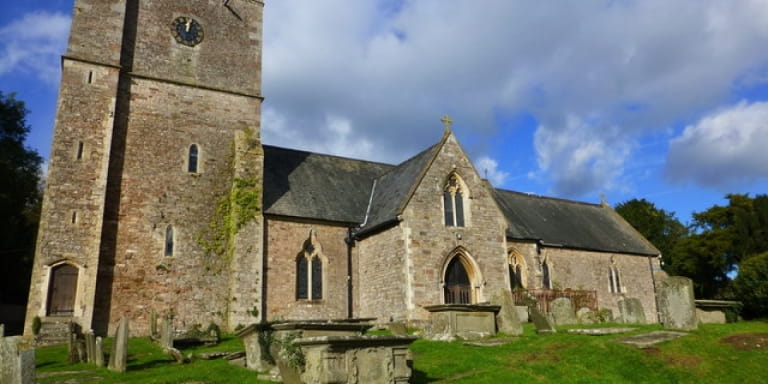St Mary & St Peter's, Tidenham
Sunday Services: 9.00am
Tidenham village is one of the smaller villages in the Parish just off the A48. This is where the historic Parish church of St Mary and St Peter is sited, overlooking the River Severn. There is a dedicated car park and access is up some steep steps. An alternative level entrance to the graveyard is further up Tidenham Lane. The key to the church can be collected from a church warden, see contacts.
The Parish church of Tidenham is dedicated to St Mary and St Peter and comprises nave, chancel, north aisle, south porch and west tower. Of the church that stood on the site in the 11th Century only the font survives. This lead font is one of six Gloucestershire fonts from the same blocks, another of them being made for the neighbouring church of Lancaut which now stands in Gloucester Cathedral.
The oldest part of the main fabric of the building is the base of the tower which probably dates from the early 13th Century, whilst the top stage of the tower dates from the 15th or early 16th Century. The church tower housed three bells in 1703 but there was a peal of six bells by 1779.
The body of the church appears to have been largely rebuilt during the 13th and 14th Centuries. There is a thirteenth century arch at the easternmost bay of the arcade; the South doorway is typical of the later 13th Century; the South wall of the church has four 14th C windows and one 15th or early 16th C window although most of their tracery has been renewed. The aisle has a trussed rafter roof, perhaps dating form the 14th C; although an earlier roof is evidenced by the stone corbels above the arcade.
There is no chancel arch and the original screen which divided the nave from the chancel was removed in c.1810. In 1819 several proprietors were licensed to put up a gallery and Sir Henry Cosby to build a seat which later belonged to the owners of Sedbury Park. Both gallery and seat have since been removed. There was extensive renovation carried out in 1857 and the organ chamber on the north side of the aisle probably dates from this time.
 Tidenham
Tidenham